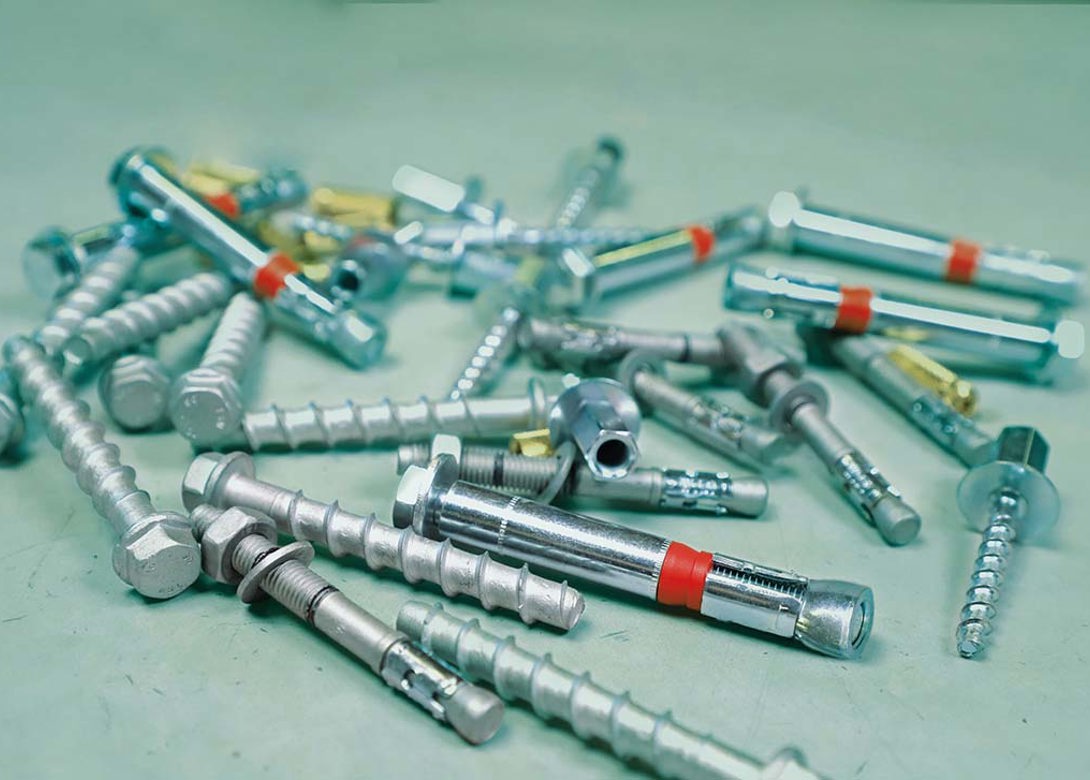
Anchors are often used in safety critical applications, but what is a safety critical application and how important is using ETA certified anchors? Here, Rob Lee, anchor specialist and regional sales manager at Walraven, discusses the importance of ETAs and the role of the BS8539:2012 code of practice when it comes to selecting anchors.
The European Technical Approval guidelines define safety critical applications as being: “Applications in which the failure of an anchor could result in collapse or partial collapse of a structure, cause risk to human life, or lead to a significant economic loss.” Over the past decade or so there has been a number of major fixing failures, resulting in the collapse of installations causing serious injury or even death. The most common reasons these occur are incorrect anchor selection, incorrect installation of anchors or anchor specification changes. To help ensure this doesn’t happen, it is useful to have an understanding of the relevant guidelines such as BS8539:2012 and what ETAs are.
BS8539:2012 is a code of practice for the selection and installation of post-installed anchors in concrete and masonry. It covers every aspect of the correct use of fixings drilled into concrete and masonry for safety critical applications. If you are a specifier, distributor, contractor, installer or tester, your roles and responsibilities in the use of construction fixings are set out in this British Standard. If your decisions or actions result in the failure of an installation, the British Standard Code of Practice BS8539:2012 states that you could be held accountable in the event of a fixing failure. To help ensure this does not happen, the code recommends the use of anchors with a European Technical Assessment (ETA).
An ETA is a recognised framework worldwide for testing anchors, assessing and interpreting test results and publishing them in a standardised format. An ETA will set out what applications the anchor is suitable for, it’s application limits, performance characteristics and how it should be installed. To gain an ETA, a product must have been rigorously tested to strict EU derived standards known as EADs (European Assessment Documents), formerly ETAGs.
There are plenty of benefits of using ETA certified anchors. This includes guaranteeing the anchor will not fail, provided the anchor has been selected and installed as outlined within the ETA. This means that the liabilities of the specifiers and installers are safeguarded and the installation will comply with BS8539. Anchor selection is also made easier with ETAs. Designed according to the relevant design method, along with software to guide the selection process, specifiers can be confident that the most suitable anchor has been chosen. This ensures economic design of anchors with an appropriate safety margin.
Detailed installation instructions are also provided in the ETA giving the contractor peace of mind that installation can be carried out correctly. Correct installation is paramount to avoid anchor failure in the future. Finally, performance values of approved anchors can be relied upon. ETA certified anchors also have CE Marking, which means that the anchor delivered to the job site will have exactly the same performance values as those tested in the approval process.
Can anchors without an ETA be trusted?
There are many anchors on the market without an ETA. These products may have some performance data published by their manufacturer, supplier or distributor but can we trust this? The reality is that determining anchor performance is a complicated matter. ETA testing subjects anchoring products to a huge range of complex tests to ensure the safety and reliability of their performance in a multitude of situations.
Can you be sure that the testing on non-approved anchors has been carried out to the same stringent criteria? Can the product performance data be trusted? The truth is that we cannot be sure and these products will not offer guarantees of performance in the same way an ETA certified anchor will.
To use a non approved anchor is a risk, and you must decide if it is one worth taking. For safety and peace of mind Walraven Ltd always recommends using ETA certified anchors. ETAs were introduced for a reason so why risk using anything else?
Walraven’s mechanical and chemical anchors are ETA certified, designed for optimum performance and manufactured for maximum safety – so users can be sure they offer a reliable and safe fixing. Alongside its product range Walraven offers a technical support service, anchor selection software and onsite support to help every step of the way.

Having spent a decade in the fastener industry experiencing every facet – from steel mills, fastener manufacturers, wholesalers, distributors, as well as machinery builders and plating + coating companies, Claire has developed an in-depth knowledge of all things fasteners.
Alongside visiting numerous companies, exhibitions and conferences around the world, Claire has also interviewed high profile figures – focusing on key topics impacting the sector and making sure readers stay up to date with the latest developments within the industry.
Don't have an account? Sign Up
Signing up to Fastener + Fixing Magazine enables you to manage your account details.